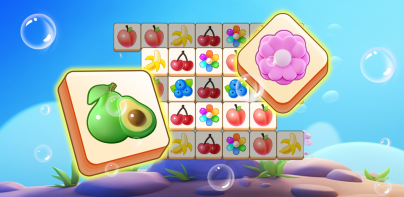




Arduino Programming Course

Arduino Programming Course ၏ ရွင္းလင္းခ်က္
Arduino Programming Course Contents
Introduction and Requirements
Overview of the course with hardware and software requirements.
Part 1: Arduino Sketch Structure and Flow
Explains the structure of an Arduino program and how program statements are executed. Demonstrates a simple "Hello World" program.
Part 2: Arduino Sketch Main Loop and Calling Functions
How the Arduino main loop works and what it means to call a function.
Part 3: Variables
An introduction to Arduino variables showing the use of integer (int) and floating point (float) variables.
Part 4: Arithmetic Operators
Addition, subtraction, multiplication, division and remainder on an Arduino.
Part 5: Relational Operators
Comparing values in Arduino.
Part 6: Increment Operator and Commenting
How the Arduino increment operator works. Using comments in Arduino sketches.
Part 7: The Arduino for Loop
How the Arduino for loop works. Use the Arduino for loop to loop through code a set number of times.
Part 8: The Arduino while Loop
How to use the Arduino while and do-while loops.
Part 9: The Arduino if Statement
Using the Arduino if statement. How to get keyboard input to the Arduino from the Serial Monitor Window.
Part 10: Making Decisions with if-else
Arduino if-else construct. Switch an LED on and off using the Serial Monitor window.
Part 11: Decisions with if-else-if
Arduino if-else-if and if-else-if-else constructs. Control LED blink rates using if-else-if constructs.
Part 12: Logical Operators
OR, AND and NOT logical operators used in Arduino sketches to control an LED from the Serial Monitor window.
Part 13: Switch & Break
Part 14: Conditional Operator
Part 15: Functions
Part 16: Returning a Value from a Function
Part 17: Arrays
Part 18: Strings
Part 19: Serial Input
Arduino Programming သင်တန်းမာတိကာ
နိဒါန်းနှင့်လိုအပ်ချက်များ
ဟာ့ဒ်ဝဲနှင့်ဆော့ဖ်ဝဲလိုအပ်ချက်များနှင့်သင်တန်း၏အကျဉ်းချုပ်။
အပိုင်း 1: Arduino Sketch ဖွဲ့စည်းပုံနှင့် Flow
တခု Arduino အစီအစဉ်၏ဖွဲ့စည်းပုံနှင့်မည်သို့အစီအစဉ်ကိုထုတ်ပြန်ချက်များကွပ်မျက်ခံရနေကြသည်ရှင်းပြသည်။ ရိုးရှင်းတဲ့ "Hello World" အစီအစဉ်ကိုပြသသည်။
အပိုင်း 2: Arduino Sketch ပင်မ Loop နှင့် Calling Functions များ
ဘယ်လို Arduino အဓိကကွင်းဆက်အကျင့်ကိုကျင့်နှင့်အဘယ်သို့ဆိုင်က function ကိုခေါ်ခြင်းကိုဆိုလိုသည်။
အပိုင်း 3: Variables ကို
ကိန်း (int) နှင့်ရေပေါ်အမှတ် (float) variable တွေကိုအသုံးပြုခြင်းဖေါ်ပြခြင်း variable တွေကို Arduino တစ်ခုမိတ်ဆက်စကား။
အပိုင်း 4: ဂဏန်းသင်္ချာလုပ်ငန်းရှင်များ
တစ်ဦး Arduino အပေါ်ထို့အပြင်, အနုတ်, အမြှောက်, ကွဲပြားခြင်းနှင့်ကျန်ရှိသော။
အပိုင်း 5: Relational လုပ်ငန်းရှင်များ
Arduino အတွက်တန်ဖိုးများကိုနှိုင်းယှဉ်ခြင်း။
အပိုင်း 6: increment အော်ပရေတာများနှင့်မှတ်ချက်တွေ
ဘယ်လို Arduino increment အော်ပရေတာအကျင့်ကိုကျင့်။ Arduino ပုံကြမ်းအတွက်မှတ်ချက်အသုံးပြုခြင်း။
အပိုင်း 7: Loop များအတွက် Arduino
ဘယ်လို Arduino ကွင်းဆက်အကျင့်ကိုကျင့်၏။ ကြိမ်အစုတခုအရေအတွက်ကကုဒ်မှတဆင့်ကွင်းဆက်မှကွင်းဆက်တွေအတွက် Arduino ကိုသုံးပါ။
အပိုင်း 8: အဆိုပါ Arduino စဉ် Loop
နေစဉ် Arduino ကိုအသုံးပြု-နေချိန်မှာကွင်းနည်း။
အပိုင်း 9: အဆိုပါ Arduino လျှင်ထုတ်ပြန်ချက်
ကြေညာချက်လျှင် Arduino အသုံးပြုခြင်း။ အဆိုပါ Serial Monitor Window ကနေ Arduino မှကီးဘုတ် input ကိုရဖို့ဘယ်လို။
အပိုင်း 10: မယ်ဆိုရင်-တခြားအတူဆုံးဖြတ်ချက်မချ
Arduino လျှင်-အခြားတည်ဆောက်ရန်။ ပေါ်နှင့် Serial Monitor င်းဒိုးကိုအသုံးပြုပြီးချွတ်ထားတဲ့ LED ကိုသို့ပြောင်းပါ။
အပိုင်း 11: မယ်ဆိုရင်-အခြား-လျှင်နှင့်အတူဆုံးဖြတ်ချက်များ
Arduino လျှင်-အခြား-လျှင်လျှင်-အခြား-လျှင်-အခြားဆောက်လုပ်ရေး။ ထိန်းချုပ်ရေးလျှင်-အခြား-လျှင်ဆောက်လုပ်ရေးသုံးပြီးမှိတ်နှုန်းထားများ LED ။
အပိုင်း 12: Logical လုပ်ငန်းရှင်များ
OR, AND နှင့်မဟာ Serial Monitor င်းဒိုးကနေတစ်ဦးကို LED ထိန်းချုပ်ဖို့ Arduino ပုံကြမ်းများတွင်အသုံးပြုယုတ္တိအော်ပရေတာ။
အပိုင်း 13: Switch & လူငယ်များသို့
အပိုင်း 14: CONDITION အော်ပရေတာ
အပိုင်း 15: Functions များ
အပိုင်း 16: တစ်ဦးရာထူးအမည်ကနေ Value ကိုပြန်ရောက်
အပိုင်း 17: array
အပိုင်း 18: Strings
အပိုင်း 19: Serial Input


























